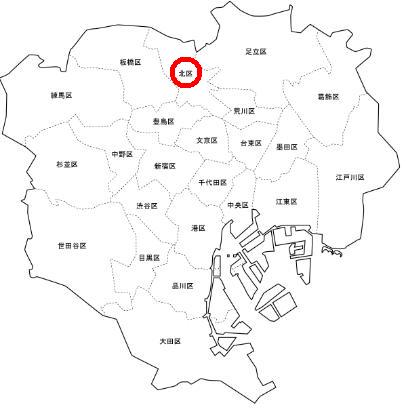
Kita-ku is located in the northern part of Tokyo’s 23 wards and is a relatively convenient location with the following main roads: Meiji-dori, Kan-nana-dori, Kanpachi-dori, Nakayama-dori and Hongo-dori.
It is said that Asuka, Akabane, Tohoku, Johoku and Keihoku were the names of Kita-ku, but it became Kita-ku because it is located in the north of the 23 wards of Tokyo.
Asukayama Park
1-1-3 Oji, Kita-ku, Tokyo
Asukayama Park has three museums (Kita-ku Asukayama Museum, Paper Museum and Shibusawa Museum). Asukayama Park was the first park designated in Japan in the Meiji era. It is a famous place depicted in Hiroshige’s ukiyoe woodblock print “Asukayama Kita no Gazei” (North View of Asukayama).
In spring, you can enjoy cherry blossom viewing. In summer, you can enjoy bathing in the waterfalls. In autumn, you can enjoy viewing autumn leaves and listening to insects. In winter, snow viewing. You can feel the changing of the seasons.
Eiichi Shibusawa’s residence, known as the father of Japanese capitalism, was also located here. The existing building from those days is designated as a national important cultural property. Shinto shrine
Oji Inari Shrine
1-12-26 Kishimachi, Kita-ku, Tokyo
Oji Inari Shrine is the Kanto Inari general shrine, famous for its foxes. In the precincts of the shrine are the remains of the fox hole where the rakugo story “Oji no Kitsune” was set. Hiroshige’s ukiyoe painting, “Oji zoku Enoki Oyasaburo no Kitsunohi” is now handed down to the annual New Year’s Eve event, the Oji Fox Procession.
On the first three days of the New Year and on the first horse day of February, the ema (votive picture of a demon woman) is on display, and on the first horse day of February, you can get a hiyoken no tako omamori (fire prevention kite protection).
You can also get a fire prevention kite protection.
Old Iwabuchi Water Gate (Red Water Gate)
5-42-6 Shimo, Kita-ku, Tokyo
The old Iwafuchi sluice gate is called Akasuimon (red sluice gate) because of the red color of the sluice gate. It was a sluice gate that separated the Arakawa River and the Sumida River from 1924 to 1960, and protected the lives of people living along the Arakawa River and its basin from flooding.
After it finished its role as a sluice, it was designated as a nominated industrial heritage and a historical building by the Tokyo Metropolitan Government. Near the old Iwafuchi Water Gate is the Arakawa Red Water Gate Green Area.
Ukimagahara cherry blossom field
2-30 Ukima, Kita-ku, Tokyo
The cherry trees in Ukigahara were well known throughout Japan in the early Edo period (1603-1867). It is said that Ieyasu Tokugawa often visited Ukigahara to admire the cherry trees. The Ukigahara Sakuragusa Field was completed in 1989 to preserve the cherry trees that have been loved since ancient times for future generations. The field is open to the public every year in mid-April, when the cherry trees are in full bloom.






